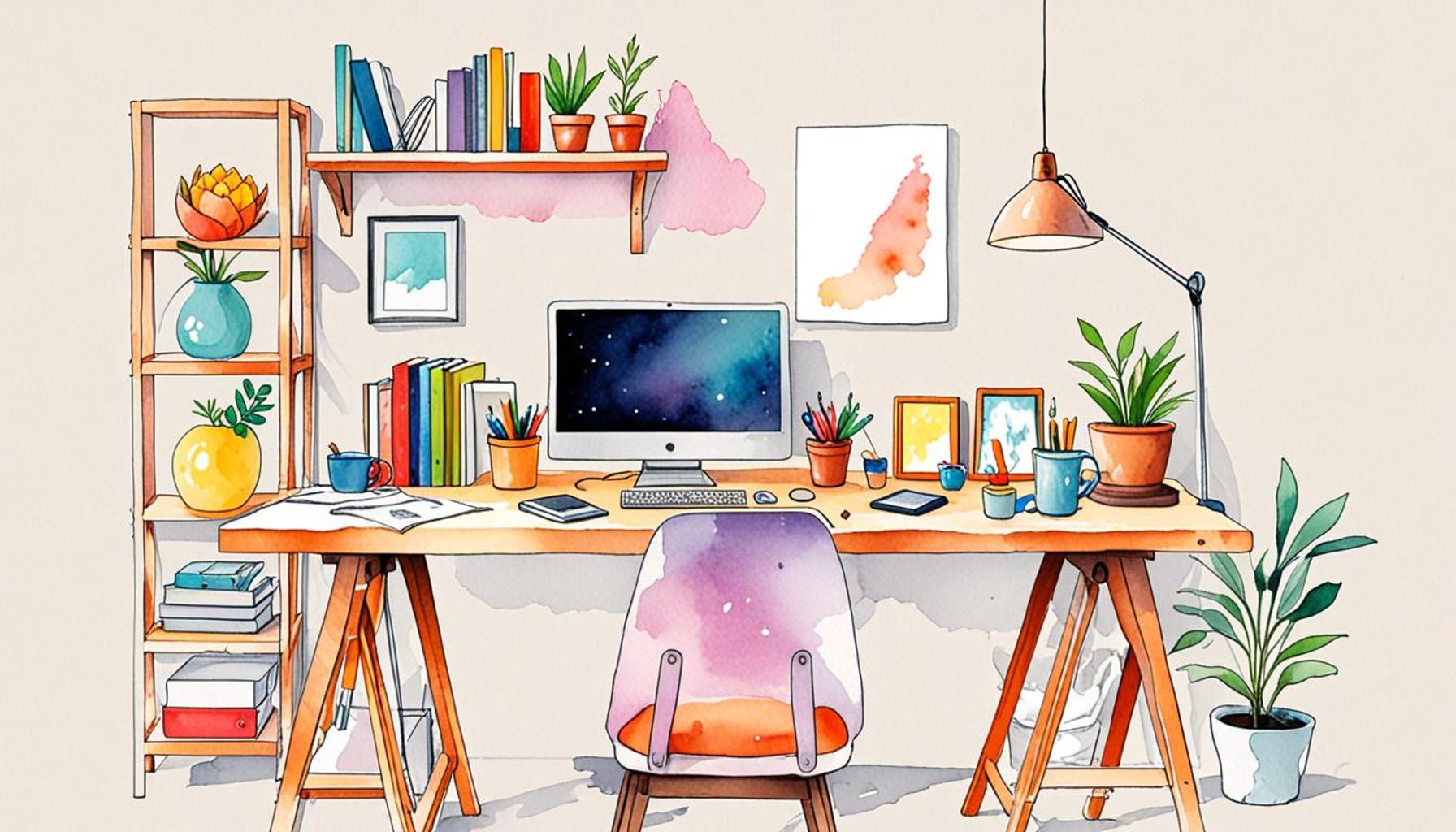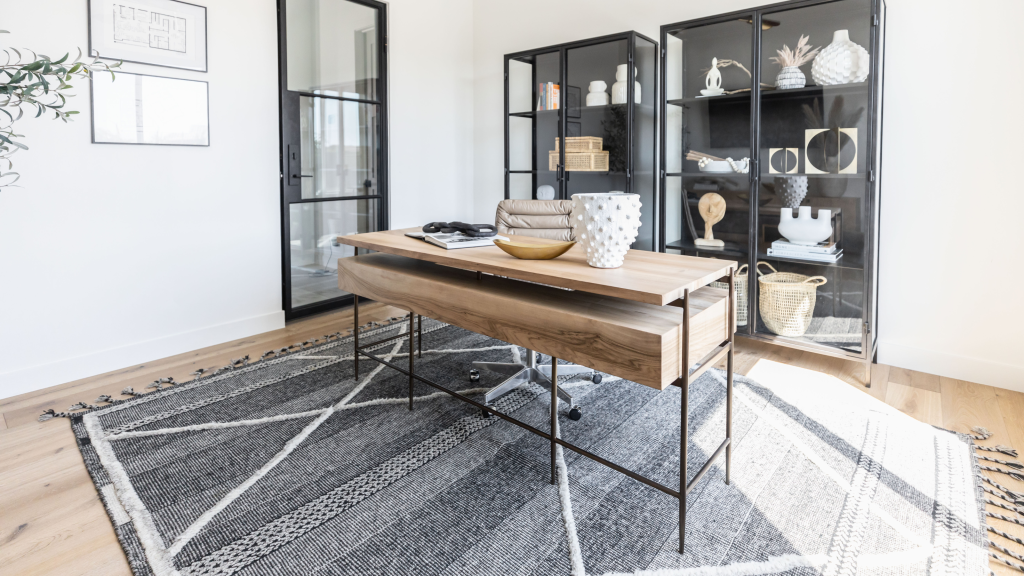Creating a Minimalist Workspace: Letting Go Techniques for Professionals Working from Home

Creating Space for Productivity
In recent years, especially influenced by global health events, the trend of working from home has significantly gained traction in Nigeria. As a result, the need for a minimalist workspace has come to the forefront of discussions around productivity. A well-thought-out workspace that emphasizes minimalism transcends mere aesthetics; it results in a clutter-free environment that fosters productivity and enhances creativity in ways that can transform one’s professional output.
Many individuals find themselves grappling with the overwhelming challenges posed by a disorganized home office. The scattered papers, overcrowded desks, and miscellaneous items often lead to stress and distractions that counteract the very essence of a productive work environment. Yet, by embracing letting go techniques, you can radically transform your workspace into a haven of productivity. For example, think of spaces like local coworking hubs in Lagos, which often utilize minimalist designs to create environments conducive to focus and collaboration. Here are some key benefits of adopting minimalism in your workspace:
- Improved Focus: A cleaner space allows you to concentrate better. With fewer visual stimuli, your mind can hone in on tasks at hand. Research has shown that excessive clutter can lead to decreased cognitive function and increased stress levels.
- Enhanced Efficiency: When tools and resources are organized, decision-making becomes straightforward. In a professional setting, quick access to software on your laptop or relevant files on your desktop can streamline workflow significantly.
- Reduced Stress: A tidy and organized workspace helps to instill a sense of calm, reducing anxiety. This is especially important for many Nigerian professionals juggling multiple responsibilities between work and family.
However, transitioning to a minimalist workspace isn’t as simple as discarding unnecessary items. It is a conscious process that aligns your physical environment with your professional aspirations. To facilitate this shift, consider these practical steps:
- Assess Your Needs: Take a moment to curate your office essentials. Identify the items that truly enhance your workflow. Perhaps digital tools, such as note-taking apps or project management software, can replace physical notebooks and to-do lists.
- Set Boundaries: To prevent work-life overlap, designate specific areas in your home for work and personal activities. For instance, setting up a small desk in a quiet corner can signal to your family that you are in work mode.
- Embrace Digital Tools: Make use of technological advancements to eliminate paper clutter. Utilizing tools like Google Drive or Asana can help manage tasks efficiently without the need for excessive paperwork.
As you embark on this journey toward creating a minimalist workspace, remember that every incremental change can lead to significant improvements. For many professionals in Nigeria, discovering how to cultivate an effective workspace is not just a matter of preference; it is essential for better clarity, focus, and purpose in your professional life. As the landscape of work continues to evolve, embracing minimalism may just be the key to thriving in this new era of productivity.
RECOMMENDED: Check out this similar article

Practical Letting Go Techniques
As you take the leap into creating a minimalist workspace, it’s essential to embrace letting go techniques that will enhance not only the physical environment around you but also your mental clarity and productivity. The process begins with the understanding that what you hold onto matters significantly less than what facilitates your efficiency. In this digital age, where minimalism is synonymous with productivity, here are practical strategies to help you declutter and organize your workspace effectively:
- Eradicate the Non-Essentials: Start by identifying items that do not serve a direct purpose in your work routine. Papers, old stationery, and even unused gadgets can accumulate quickly. Challenge yourself to sort through these items regularly. For instance, any document older than three months that hasn’t been referenced can likely be discarded or digitized, further conserving space.
- Implement the One-In-One-Out Rule: Whenever you acquire something new for your workspace, make it a practice to remove one item. This technique helps prevent the accumulation of unnecessary items and encourages you to be selective about your workspace essentials. In your Nigerian context, this could apply to local art pieces or souvenirs that add personality to your desk while also ensuring you maintain a balance.
- Digitize whenever possible: As previously mentioned, the digital revolution allows for many traditionally physical documents to be stored electronically. Transitioning from physical to digital not only saves physical space but also contributes to an organized and efficient workflow. Utilize cloud-based solutions like Google Docs for collaboration or Evernote for note-taking, which can also be easily accessed from your mobile phone or tablet.
As you dive into these letting go techniques, it’s crucial to recognize that transitioning towards minimalism is a journey rather than a destination. This journey requires honesty about what you truly need versus what you simply hold onto out of habit or sentimentality. Particularly for professionals in Nigeria, where many juggle various responsibilities, creating a serene workspace can lead to improved focus and productivity. A clear workspace fosters a clear mind, allowing for better decision-making and creativity.
Moreover, consider utilizing local resources such as workshops or online seminars focused on workspace organization. These platforms can not only provide valuable insights but also build a community of like-minded professionals aiming to enhance their home office experiences. Just as a quiet corner in a vibrant Lagos café can inspire creativity, so can a well-curated workspace at home.
In this phase of redefining your workspace, take the time to appreciate the space you create. Minimalism is not merely about empty surfaces but rather about honoring the essential while letting go of the unnecessary. Following these techniques can set you on a path towards a workspace that reflects your aspirations and enhances your daily productivity.
| Advantages | Description |
|---|---|
| Enhanced Focus | By minimizing distractions, professionals can significantly increase their productivity. A clean workspace allows for clearer thinking and improved concentration. |
| Improved Mental Clarity | Adopting letting go techniques enables individuals to declutter not just their physical space but also their mind, leading to better decision-making and creativity. |
| Stress Reduction | A minimalist workspace is associated with less anxiety. Reduced visual clutter promotes a calming environment, which aids in stress management for work-from-home professionals. |
| Encourages Minimalism | This lifestyle shift encourages individuals to evaluate what they truly need, leading to more intentional purchasing and ultimately fostering a sustainable work environment. |
Leveraging the principles of a minimalist workspace not only refines the professional environment but also cultivates a more focused and serene mindset. Implementing such changes can facilitate the successful adoption of effective letting go techniques, further enhancing productivity and well-being for professionals working from home. By acknowledging the vital link between environment and mental state, individuals are empowered to create a space that reflects their values and aspirations.
RECOMMENDED: Check out this similar article
Establishing Mindful Habits
Creating a minimalist workspace extends beyond simply decluttering your physical surroundings; it also involves developing mindful habits that reinforce a productive environment. This connection between physical space and mental clarity must be nurtured consistently. Here are several strategies to build those habits effectively:
- Designate a Daily Clean-Up Time: Allocate a specific time each day to tidy up your workspace. This could be the last ten minutes of your workday or first thing in the morning before you start. Regular cleaning prevents clutter from accumulating and promotes a sense of responsibility towards maintaining an organized atmosphere. For professionals in Nigeria, this practice can be especially beneficial when juggling a flexible work schedule.
- Limit Visual Distractions: A minimalist workspace is not just about what you put on your desk, but also what you choose to keep away from it. Reduce distractions by minimizing visual stimuli, such as overly vibrant decorations or technology-related gadgets that are not vital to your work. This is particularly relevant in bustling urban environments where noise and visual chaos can easily infringe upon focus.
- Set Clear Work Zones: If your home workspace doubles as a family or recreational space, establishing distinct zones can help maintain minimalism. Clearly define what each area is for. Encourage family members to respect these boundaries while you work. In Nigerian homes, where communal living is common, this separation can help foster respect for your work time and contribute to a more productive environment.
Moreover, identify your non-negotiables—essential items that enhance your productivity. For some professionals, having a well-loved notebook or a motivational quote displayed might be the driving force behind their creativity. However, being intentional about the choice of these items is critical. Aim for quality over quantity; less is often more.
The digital aspect of your workspace deserves equal attention. Be diligent about managing your digital clutter. Regularly delete files you no longer need, unsubscribe from unnecessary newsletters, and categorize documents into designated folders. This practice can simplify your search process, enhancing both efficiency and mental clarity. Use tools like Trello or Asana for task management, which can significantly reduce scattered post-it notes and paper reminders, making your to-do list a visual, manageable part of your digital workspace.
Another vital aspect of establishing mindful habits is the power of routine. Create a structured daily schedule that includes time for breaks and personal reflection. As a professional working from home in Nigeria, it’s easy to lose track of time amidst the myriad of tasks, but taking intentional breaks can recharge your mental state and increase productivity. Consider local practices like yoga or mindfulness, which can be done from the comfort of your home and aid in maintaining a calm and focused mindset.
Furthermore, incorporate minimalist principles into your work attire as well. Dressing simply can create a seamless transition from a personal to a professional mindset, fostering focus without the distractions of choosing complicated outfits. This approach aligns closely with the ethos of minimalism, promoting efficiency in every aspect of your work life.
In conclusion, building mindful habits and being intentional in your decisions can create a conducive environment for productivity and creativity. Every decision, big or small, contributes to a workspace that not only reflects minimalism but also enhances your professional journey.
ADDITIONAL INSIGHTS: Expand your understanding here
Conclusion
In today’s fast-paced world, where distractions abound and multitasking is often the norm, creating a minimalist workspace serves as a powerful remedy for professionals working from home. By embracing the principles of simplicity and intentionality, you can dramatically enhance your productivity and overall well-being. The process begins with the crucial step of letting go—whether that’s clearing your physical space of unnecessary items or decluttering your digital life.
Establishing mindful habits, such as daily clean-up routines and designated work zones, further cultivates an environment where focus and efficiency thrive. These techniques not only contribute to a serene workspace but also create mental clarity, allowing you to tackle tasks with greater ease and creativity. Adopting tools like Trello or Asana for task management can help streamline your responsibilities, reducing overwhelm while promoting clear progress.
As you embark on this minimalist journey, remember that it is about quality over quantity—be it in your workspace setup or the items you choose to keep. A personal recommendation for Nigerian professionals is to leverage local cultural practices, such as incorporating natural elements into your workspace or using familiar materials to enhance a sense of comfort and inspiration.
Ultimately, creating a minimalist workspace is an ongoing process that reflects your evolving needs and priorities. By developing a consistent routine and being deliberate about your choices, you hold the key to transforming your home office into a sanctuary where productivity flourishes, creativity blossoms, and balance is achieved. Consider this a call to action: assess your workspace today, and let go of what no longer serves you. The minimalist path awaits, ready to invigorate your professional journey.



